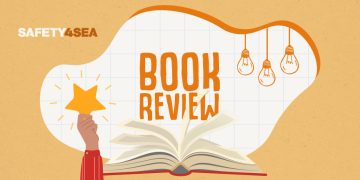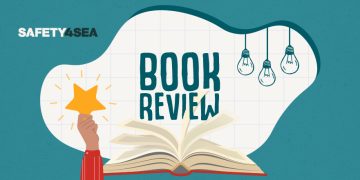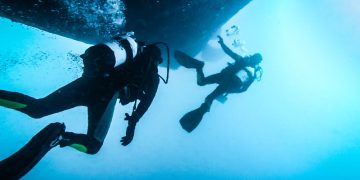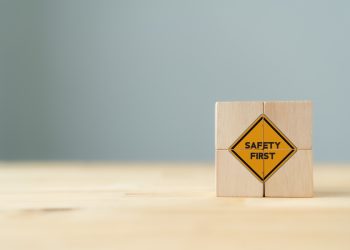This time, our special column, in association with The North of England P&I Club, gives emphasis on enclosed space entry. The dangers of enclosed space entry on board ships is rising as the hidden enemy for crews, with human element failures often considered as a key cause, including; fatigue, complacency and cutting corners. These highlight improper training, insufficient hazard awareness, and perhaps a need for enclosed spacer entry to be reviewed further more. In this regard, we asked global experts to share their views on the following question:
Does enclosed space entry need more regulation?
 David Patterson David PattersonLoss Prevention Executive The North of England P&I Club |
 Captain Kuba Szymanski Captain Kuba SzymanskiSecretary General, InterManager |
|
| Yes – The majority of training for entry into enclosed spaces is conducted onboard and left to the shipping company. Many companies have very high standards of enclosed space entry training. But not all do. There is no industry standard. The continued incidence of enclosed spaces deaths suggests that more focus should be placed on the training requirements for conducting safe enclosed space entry. STCW should require an enclosed space entry training course with a detailed minimum standard. This standardised approach would give all seafarers a fundamental appreciation of the risks of enclosed spaces and in conducting safe entries. Standardised training is particularly important for seafarers working on bulk carriers as typically the appreciation of the risks of entering enclosed spaces is not as acute as that of tanker crews. Standardised training should help drive awareness across the industry. There is also an issue with equipment. Under SOLAS vessels, with the exception of tankers, are required to carry at least one portable multi-gas detector. If only one gas detector is onboard it is not possible to compare the readings so total reliance is put on the fact that this detector is calibrated, functioning and being operated correctly. The only way to confirm that an enclosed space is safe to enter is by using a gas detector – the minimum requirement could be increased and also include the requirement for personal gas detectors. | YES. It’s not often that I would find myself advocating greater regulation in the shipping industry – but when it comes to the situation regarding enclosed spaces on vessels I will make an exception! I would however insist that any new regulation would actually benefit the seafarers who are at the ‘coal face’. New regulation is needed, for example, towards the design of the enclosed spaces. I would love to see realistic requirements for the spaces in which human beings are expected to work. That would include entry points, emergency escape points, provisions for ventilation and atmosphere monitoring in the WHOLE space. Responders to our recent survey into the dangers of enclosed spaces – nearly 5,000 seafarers – were very vocal when it comes to the time pressures placed upon them when working in enclosed spaces and the lack of equipment available to them. Can these issues be regulated? I am afraid so. Currently there is absolutely no regulation stipulating the minimum/maximum number of people in the enclose space – either working or in the standby party. This frequently results in units of just two seafarers not being supervised by anyone other than the officer of the watch, who is on the bridge. Seafarers who responded to our survey were also quick to point out that existing procedures are not compatible with reality, nor even with each other!
[view full version of Capt. Kuba’s response here] |
|
 Artiom Guzar Artiom GuzarQA and ISM Manager, Norbulk Shipping UK Limited |
 Capt. David J Patraiko Capt. David J PatraikoMaster Mariner, Director of Projects, The Nautical Institute |
|
| Yes, enclosed space entry does require further regulations. The obvious proof is the amount of lives that is still taken. One of the possible options is a mandatory course on enclosed space entry. This could be a course on its own or a part of basic training. Such course is already run in Glasgow Nautical College. Further regulations could be applied to the requirements of the future ships’ design i.e. the spaces where majority of fatalities are happening could be required to be fitted with gas measurement devices, openings and additional fittings could be considered for an easy and fast evacuation. It is not only the seastaff are affected. Shore stevedores must be educated about the dangers of the enclosed spaces too. | No. The ISM Code clearly requires the identification and mitigation of risk, and given the number of deaths this identification and mitigation of risk is not being done well enough for enclosed spaces. One of the key challenges is for seafarers to understand that the definition of an ‘enclosed space’ is not just structural, but is based upon the likeliness of a hazardous environment due to poor ventilation, and often the type of cargo being carried. A space adjacent to a cargo space that has a low risk on one voyage may have a high risk with a different cargo on the next voyage! The NI continues to address these issues in our publications, courses, MARS and at the IMO. | |
 Capt. Sachin Singh Capt. Sachin SinghAlternate DPA / CSO, Fleet Ship Management Pte. Ltd., Singapore |
 Stefanos Stylianos Stefanos StylianosHSQE & Marine Manager/ D{A MINERVA MARINE Inc. |
|
| No. Certainly not! What it needs is “Common Sense” along with “Situational Awareness”. The focus of today’s seafarer is gradually shifting towards either ensuring compliance or having the evidence of doing so. What was once known as ‘the good practice of seamen’ has now been translated into numerous procedures forming our bulky SMSs. The business needs have driven the seafarer towards ensuring that all go/no-go items on the list are checked, however gradually, it is taking away the onus to think, what he/she is doing. Imagine crossing the road with your 4-year old son/daughter. “Look left, look right, look left” would be your mantra despite the “green man” happily guiding you on from the street signpost. Filling out an ESE checklist in the comfort of your office on the computer, then not testing the air in the space, is definitely not what the industry needs. The key is, “Spreading Awareness” and build the “Culture” of looking out for yourself and your buddies. Regular and quality training, with hands-on experience in ESE procedures while evaluating ESE in totality, is the mantra. It’s time to groom the belief, “Not on my watch!”, to ensure that each one us serving out there on the high seas goes home hale and hearty. | NO, the need for more regulation is not in my opinion the silver bullet to eliminating incidents associated with the high risk operation of enclosed space entry. Regulations and guidance governing enclosed space entry have been in force since the introduction of ISGOTT in 1978, SIRE in 1993, ISM in 1994 and TMSA in 2004 including IMO recommendations as per Resolution A.1050(27), thus an abundance of regulations. Our industry through regulatory bodies and industry best practices has reached a stage were our procedures, permit to work and risk assessment process is mature and accounts for all the hazards and required mitigating measures, in theory. Incidents start happening when we ignore or overlook hazards, changing parameters and application of available instructions/guidance. This is not so simple to cure and should start with our education, training and safety culture throughout, on board and ashore. We are responsible not only for creating wonderful procedures, we are responsible for their effective implementation on board. We must ensure that our seafarers are adequately trained ashore and on board and familiarised with their duties. Officers are familiar with procedures and strictly abide to the safety management system and permit to work, use the system for guidance and instruction and not only as a paperwork exercise. Finally we must all take care of each other, issue work instructions as if our own flesh and blood would be carrying out the job, give that extra piece of advice that may save a life! | |
 Manit Chander Manit ChanderChief Executive Officer, HiLo Maritime Risk Management |
 Arun Sharma Arun SharmaExecutive Chairman Indian Register of Shipping (IRClass) |
|
| No. HiLo is driving a new way of looking at risk. We combine day to day safety reports from shipping companies with a sophisticated predictive model to show them their highest risks. HiLo collects internal customer safety data from over 3000 vessels. This data suggests that rather than changing the regulations, the risks associated with entering enclosed or confined spaces can be reduced by ensuring current regulations are followed. During the last 2 years, 98% of all enclosed or confined space events were related to regulatory and procedural noncompliance while only 2% came from insufficient regulations and procedures. The data shows two issues driving noncompliance – risk culture and risk awareness. Risk normalisation makes seafarers more likely to take risks around enclosed spaces. Lack of knowledge about what enclosed space risks are, and how to make them safe, means seafarers are less likely to push for better practices. This raises the next question – ‘how do we ensure compliance with the regulations we already have’ | Yes. Due to continuing loss of life and serious accidents involving solid bulk cargoes, particularly the IMSBC Code group B cargoes; there have been recent discussions at IMO proposing amendments to Assembly Resolution A.1050(27) to address the adoption of a number of specific hazard identification, risk assessment and control procedures aimed at reducing such incidents/accidents which have been agreed to be taken up forward based upon future submissions with a request for new work output or an extension to the existing new output to revise these Guidelines to be submitted at the future session of MSC. It may be noteworthy to state that despite the frequency of confined space fatalities on vessels on the rise, unlike fire-fighting and sea survival, there are currently no regulatory requirements for enclosed space practical training for seafarers prior to being assigned to any shipboard duties. It is imperative that those who join the industry learn at an early stage of the dangers of entering into enclosed spaces. It is my belief that the existing Regulations may not be sufficient & working and thus it could be a good idea that IMO considers to extend the basic Personal Safety training module already required by STCW to cover training in enclosed space entry, as in paragraph 2.1.4 of Chapter VI, Section A of STCW Code. This mandatory training could also address the associated risks with the variety of different cargoes and fuels which may be carried in near future | |

































































